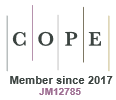An illustrative guide to a Policy Lab model: contributing to evidence-informed policies for digital technology in youth mental health care
David G. Baker A B * , Bridget Kenny A B , Sophie C. Prober E , Amanda Sabo A B , Matthew P. Hamilton C D , Caroline X. Gao A B C D and Shane Cross A BA
B
C
D
E
Abstract
This article provides researchers with an illustrative guide for a workshop model that facilitates evidence-informed policy. The Policy Lab model supports collaboration between experts and policymakers; in the example provided, participants considered digital technologies with near-term potential to improve youth mental health care.
The Policy Lab model uses structured workshop activities to explore a policy question, before narrowing the focus on potential answers. The barriers, enablers, and implementation mechanisms of potential policies are then considered. From this data policy proposal(s) are drafted, reviewed, and reported.
Through the Policy Lab activities, participants identified two priority technologies and generated data to inform the formulation of two policies. The policies were focused on (1) using artificial intelligence to improve the personalisation and precision of youth mental health care and (2) the expanded use of integrated data to improve youth mental health service quality.
Evidence-informed policy is a collaborative process. To potentially influence policy requires timely engagement with policymakers and an understanding of the policy context. Researchers considering using the model are encouraged to include a range of expertise.
Keywords: digital, engagement, evidence, mental health, policy, workshop, youth.
References
4 John P. Frank R. Baumgartner and Bryan D. Jones, Agendas and Instability in American Politics. In: Lodge M, Page EC, Balla SJ, editors. The Oxford Handbook of Classics in Public Policy and Administration. Oxford University Press; 2015. pp. 577–88. Available at 10.1093/oxfordhb/9780199646135.013.35. [cited 4 December 2024].
5 Greer S. John W. Kingdon, Agendas, Alternatives, and Public Policies. In: Lodge M, Page EC, Balla SJ (eds) editors. The Oxford Handbook of Classics in Public Policy and Administration. Oxford University Press; 2015. pp. 417–32. Available at 10.1093/oxfordhb/9780199646135.013.18. [cited 4 December 2024].
6 Lewis JM. The limits of policy labs: characteristics, opportunities and constraints. Policy Des Pract 2021; 4(2): 242-51.
| Crossref | Google Scholar |
8 Cassola A, Fafard P, Palkovits M, Hoffman SJ. Mechanisms to Bridge the Gap Between Science and Politics in Evidence-Informed Policymaking: Mapping the Landscape. In: Fafard P, Cassola A, de Leeuw E, editors. Integrating Science and Politics for Public Health. Cham: Springer International Publishing; 2022. pp. 293–328.
9 Mayne R, Green D, Guijt I, Walsh M, English R, Cairney P. Using evidence to influence policy: Oxfam’s experience. Palgrave Commun 2018; 4(1): 122.
| Crossref | Google Scholar |
10 Olejniczak K, Borkowska-Waszak S, Domaradzka-Widła A, Park Y. Policy labs: the next frontier of policy design and evaluation? Policy Polit 2020; 48(1): 89-110.
| Crossref | Google Scholar |
12 Killackey E. Lived, loved, laboured, and learned: experience in youth mental health research. Lancet Psychiatry 2023; 10(12): 916-8.
| Crossref | Google Scholar | PubMed |
13 Policy Profession. Policy System Framework. UK Government; 2024. Available at https://www.gov.uk/government/publications/policy-system-framework/policy-system-framework
14 Hinrichs-Krapels S, Bailey J, Boulding H, Duffy B, Hesketh R, Kinloch E, et al. Using Policy Labs as a process to bring evidence closer to public policymaking: a guide to one approach. Palgrave Commun 2020; 6(1): 101.
| Crossref | Google Scholar |
15 Productivity Commission. 5-year Productivity Inquiry: Australia’s data and digital dividend, Volume 5. Canberra; 2023. Available at https://www.pc.gov.au/inquiries/completed/productivity#report
18 Lewinski AA, Crowley MJ, Miller C, Bosworth HB, Jackson GL, Steinhauser K, White-Clark C, McCant F, Zullig LL. Applied Rapid Qualitative Analysis to Develop a Contextually Appropriate Intervention and Increase the Likelihood of Uptake. Med Care 2021; 59(Suppl 3): 242.
| Crossref | Google Scholar | PubMed |
19 Orygen. Digital Futures in Youth Mental Health: Policy Lab. 2023. Available at https://www.orygen.org.au/Orygen-Institute/Policy-Areas/Government-policy-service-delivery-and-workforce/Government-policy/Digital-Futures-in-Youth-Mental-Health
21 Lim D. Getting the best outcomes from integrated datasets. 2023. Available at https://www.themandarin.com.au/213812-getting-the-best-outcomes-from-integrated-datasets/
22 Alcaraz-Martínez R, Vállez M, Lopezosa C. Covering artificial intelligence: the role of European Union, British, and American media outlets in generative AI Visibility. Commun Soc 2024; 37(2): 279-91.
| Google Scholar |
24 Lewis JM. The limits of policy labs: characteristics, opportunities and constraints. Policy Des Pract 2021; 4(2): 242-51.
| Crossref | Google Scholar |
25 Yamaguchi S, Bentayeb N, Holtom A, Molnar P, Constaninescu T, Tisdall E, et al. Participation of Children and Youth in Mental Health Policymaking: A Scoping Review [Part I]. Adm Policy Ment Health 2023; 50(1): 58-83.
| Crossref | Google Scholar | PubMed |


